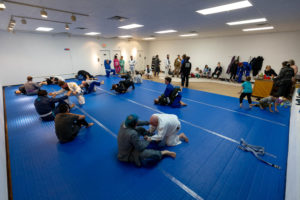The History of Brazilian Jiu Jitsu
Brazilian Jiu-Jitsu (BJJ) is a martial art and combat sport that focuses on grappling and ground fighting. It was developed in Brazil in the early 20th century by the Gracie family, who were of Scottish and Brazilian descent.
The origins of BJJ can be traced back to the teachings of Mitsuyo Maeda, a Japanese judoka (practitioner of judo) who immigrated to Brazil in 1914. Maeda was a student of the famous judo master Jigoro Kano, and he brought the principles of judo to Brazil with him.

One of Maeda’s students in Brazil was Carlos Gracie, who would go on to become one of the most important figures in the development of BJJ. Carlos was the eldest of five brothers, and he began teaching judo to his brothers and friends in the 1920s. Over time, they began to adapt the techniques they were learning to better suit their smaller size and different body types.
Carlos’ younger brother, Hélio Gracie, was particularly instrumental in the development of BJJ. Hélio was not as physically strong as his brother, and he found that the traditional judo techniques were not as effective for him. He began to focus on the ground game, and he developed a system that relied on leverage and technique rather than brute strength.
Hélio and Carlos opened the first Gracie Jiu-Jitsu Academy in Rio de Janeiro in 1925, and they began to teach their new style of jiu-jitsu to the public. The Gracie family continued to develop and refine the art, and it soon gained a reputation as an effective martial art.
In the 1980s and 1990s, BJJ began to gain popularity in the United States, thanks in large part to the success of the Gracie family in the early days of the Ultimate Fighting Championship (UFC). Brazilian jiu-jitsu practitioners such as Royce Gracie and Renzo Gracie dominated in the tournament, showcasing the effectiveness of the discipline in a real fight setting.
Today, BJJ is practiced by millions of people around the world, and it is widely considered to be one of the most effective martial arts for self-defense and competition. It is also a popular form of fitness and sport, and it is often used to supplement training in other combat sports such as MMA and wrestling.
In conclusion, Brazilian Jiu-Jitsu is a martial art developed in Brazil by the Gracie family, which began as an adaptation of traditional Japanese judo. Through the years, the Gracie family and their students continue to develop and refine the art, making it one of the most effective martial arts in the world today, not just for self-defense but also in competition.
